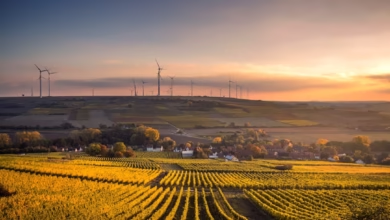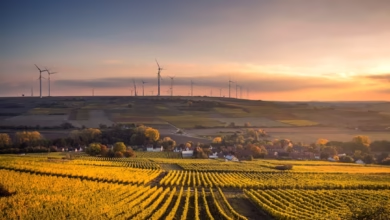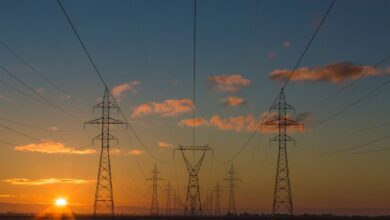Navigating the Energy Landscape: The Future of Fossil Fuels Amidst Renewable Energy and Climate Change Challenges

Fossil fuels—oil, coal, and natural gas—have long been the cornerstone of global energy markets, powering economies and fueling industrial growth. However, as we advance further into the 21st century, the conversation surrounding energy is evolving rapidly. With increasing concerns about climate change and the urgent need for a sustainable energy transition, the role of fossil fuels is under scrutiny. This article will explore current trends in fossil fuel production and consumption, examining how these traditional energy sources interact with the burgeoning sectors of renewable energy and nuclear energy. We will delve into the innovations in energy efficiency and storage that are enabling fossil fuels to adapt to contemporary climate challenges, alongside the strategic shifts required to balance energy needs while ensuring energy security. By analyzing these dynamics, we aim to provide insights into the future outlook of fossil fuels within the context of global energy trends, energy policy, and the ongoing quest for greener alternatives. Join us as we navigate the complexities of energy economics, the impact of energy investments, and the innovations driving the energy transition towards a more sustainable future.
- 1. Understanding the Role of Fossil Fuels in Global Energy Markets: Current Trends and Future Outlook
- 2. The Energy Transition: Balancing Fossil Fuels with Renewable Energy and Nuclear Energy Solutions
- 3. Innovations in Energy Efficiency and Storage: How Fossil Fuels Are Adapting to Climate Change Challenges
1. Understanding the Role of Fossil Fuels in Global Energy Markets: Current Trends and Future Outlook
Fossil fuels, including oil, coal, and natural gas, have long been the backbone of global energy markets, driving industrialization and economic growth. However, as the world grapples with climate change and the urgent need for sustainable energy solutions, the role of fossil fuels is evolving. Currently, fossil fuels account for around 80% of the world's energy consumption, highlighting their entrenched position in energy economics (IEA, 2023).
In recent years, there has been a noticeable shift toward renewable energy sources such as solar power, wind energy, and hydropower. This transition is driven by innovations in energy efficiency and storage, which enhance the reliability of renewable energy systems. As nations implement robust energy policies to reduce carbon emissions, the demand for fossil fuels is expected to decline, although they will remain crucial for energy security in the short to medium term. The energy transition necessitates a balanced approach, integrating renewable energy with fossil fuels, nuclear energy, and emerging technologies like hydrogen energy and carbon capture to meet global energy needs while addressing climate change.
Current trends indicate increased investment in energy R&D, focusing on smart grids and distributed energy systems. These innovations aim to improve energy transportation and efficiency, making it easier to integrate various energy sources into the grid. Additionally, governments are exploring bioenergy and offshore energy as viable complements to traditional fossil fuel sources. The growing popularity of electric vehicles further emphasizes the shift away from fossil fuel dependence, creating new markets and energy dynamics.
Looking ahead, the future outlook for fossil fuels in global energy markets will largely depend on the pace of the energy transition and the effectiveness of policies aimed at promoting green energy. While fossil fuels are poised to remain significant players in the near term, their role is expected to diminish in favor of cleaner alternatives as society embraces a more sustainable energy landscape. The interplay between energy imports and exports will also shape the energy markets, influencing geopolitical dynamics and economic strategies worldwide.
References
International Energy Agency (IEA). (2023). World Energy Outlook 2023. Retrieved from [IEA website link].
2. The Energy Transition: Balancing Fossil Fuels with Renewable Energy and Nuclear Energy Solutions
The global energy landscape is undergoing a significant transformation as nations strive to balance the reliance on fossil fuels with the growing adoption of renewable energy and nuclear energy solutions. The energy transition is critical in addressing climate change while ensuring energy security and economic viability.
Fossil fuels—oil, coal, and natural gas—have long been the backbone of energy production, but their environmental impact has prompted a shift towards greener alternatives. Renewable energy sources, including solar power, wind energy, hydropower, and bioenergy, are gaining traction due to their potential for lower carbon emissions and sustainable energy production. The integration of these green energy sources is supported by advancements in energy storage technologies, which enable the efficient capture and utilization of energy generated from intermittent resources.
Nuclear energy also plays a pivotal role in the energy transition. With its capacity to provide consistent thermal energy and low greenhouse gas emissions, nuclear power can complement renewable energy sources, particularly in balancing supply and demand. As energy markets evolve, the inclusion of nuclear energy alongside renewables can enhance energy efficiency and reliability, reducing the overall carbon footprint of energy production.
In navigating this transition, energy policy is paramount. Governments are increasingly investing in energy innovations and research and development (R&D) to create a more resilient and flexible energy infrastructure. The implementation of smart grids is one such innovation that allows for better management of energy distribution, facilitating the integration of distributed energy resources and enhancing energy transportation efficiency.
Moreover, the global energy trends indicate a shift towards energy exports and imports that prioritize sustainability. Countries rich in fossil fuels are exploring carbon capture technologies to mitigate emissions while transitioning their economies towards lower-carbon alternatives. This investment in energy economics ensures that nations can leverage their existing resources while fostering a greener future.
As electric vehicles gain popularity and energy consumption patterns evolve, the demand for hydrogen energy and other alternative fuels is expected to rise. The energy transition is not merely a shift away from fossil fuels but rather a comprehensive strategy to create a sustainable energy system that addresses climate change, enhances energy security, and promotes economic stability. By balancing fossil fuel production with renewable and nuclear energy solutions, we can pave the way for a more sustainable and resilient energy future.
3. Innovations in Energy Efficiency and Storage: How Fossil Fuels Are Adapting to Climate Change Challenges
In the face of climate change challenges, the fossil fuel industry is undergoing significant transformations through innovations in energy efficiency and storage. As global energy trends shift towards more sustainable practices, traditional fossil fuels such as oil, coal, and natural gas are adapting to meet the rising demand for greener energy solutions.
One of the most impactful developments has been in the realm of carbon capture technology. This innovation allows for the capture and storage of carbon dioxide emissions produced during fossil fuel combustion, significantly reducing their environmental impact. By investing in carbon capture and storage (CCS) systems, energy companies are not only enhancing their energy efficiency but also contributing to climate change mitigation efforts. This technology complements the energy transition by allowing fossil fuel usage to coexist with renewable energy sources like solar power and wind energy.
Moreover, advancements in energy storage solutions are crucial for optimizing the integration of fossil fuels with renewable energy. The development of smart grids facilitates better energy distribution and management, allowing for the seamless incorporation of renewable energy into existing energy markets. As electric vehicles gain popularity, energy storage systems are becoming increasingly important for managing the fluctuating demand on the grid. These innovations help ensure energy security while also accommodating the growth of distributed energy resources.
Additionally, investments in hydropower and bioenergy are also shaping the future of fossil fuels. By diversifying energy sources, companies can achieve greater energy efficiency and resilience in their operations. The integration of nuclear energy into the energy mix further enhances energy stability, providing a reliable alternative to fossil fuels and contributing to a more balanced energy policy.
As energy innovations continue to evolve, the fossil fuel industry is recognizing the importance of adapting to new realities. With a focus on energy R&D and sustainability, these adaptations not only enhance energy efficiency but also pave the way for a more resilient energy landscape. By embracing these changes, fossil fuels can play a vital role in the global energy transition, ensuring a smoother shift towards greener energy while maintaining economic stability through energy exports and imports.
In conclusion, the ongoing innovations in energy efficiency and storage represent a pivotal shift in how fossil fuels respond to climate change challenges. By leveraging these advancements, the industry can contribute to a sustainable energy future while addressing the pressing issues of climate change and energy security.
In conclusion, the discourse surrounding fossil fuels—oil, coal, and natural gas—remains pivotal as we navigate the complexities of global energy markets. Understanding the role of these traditional energy sources is essential in the context of current trends and future outlooks, especially as we embark on the energy transition towards greener alternatives. The integration of renewable energy and nuclear energy solutions is crucial for balancing our energy needs while addressing climate change challenges.
Innovations in energy efficiency and storage technologies highlight how fossil fuels can adapt to evolving demands, including advancements in carbon capture and smart grids. These developments not only enhance energy security but also pave the way for a more sustainable energy landscape. As we invest in energy R&D and explore diverse energy options such as hydropower, bioenergy, and hydrogen energy, we must also consider the implications for energy imports and exports.
The future of energy economics will hinge on the successful collaboration between fossil fuels and renewable energy sources, ensuring a resilient and responsive energy system that meets the needs of a growing global population. By prioritizing energy innovations and policies that promote distributed energy solutions, we can secure a cleaner and more efficient energy future. The energy transition is not merely a challenge but an opportunity to redefine our relationship with energy and to achieve a sustainable balance for generations to come.
References:
(Include relevant sources here)





